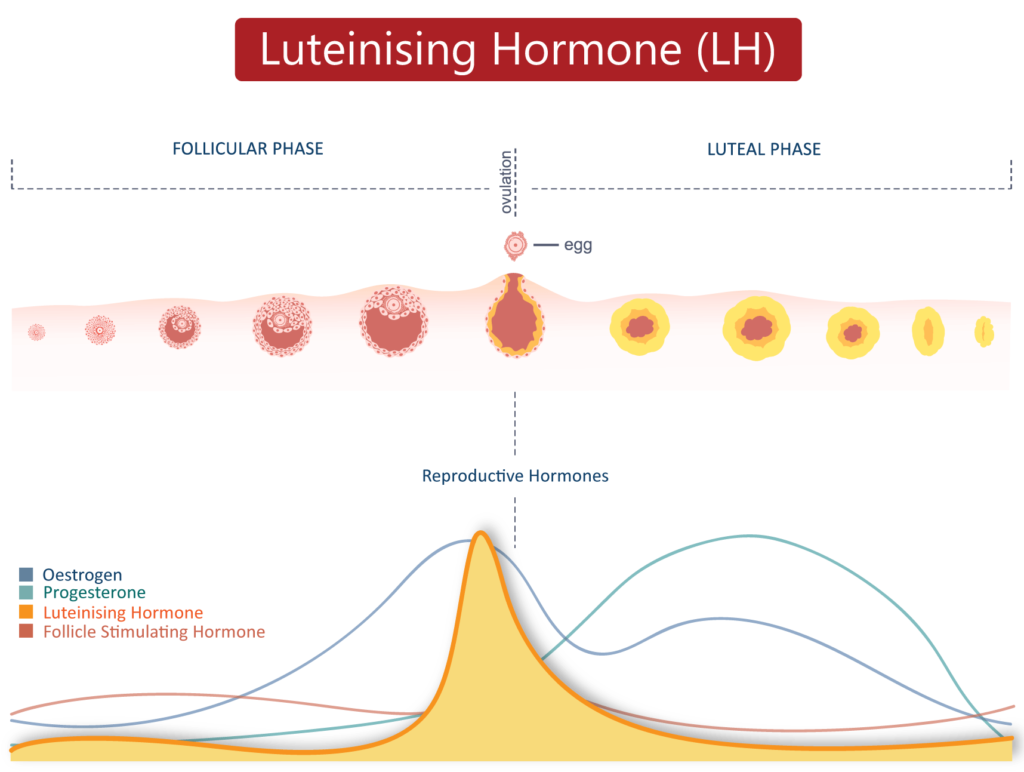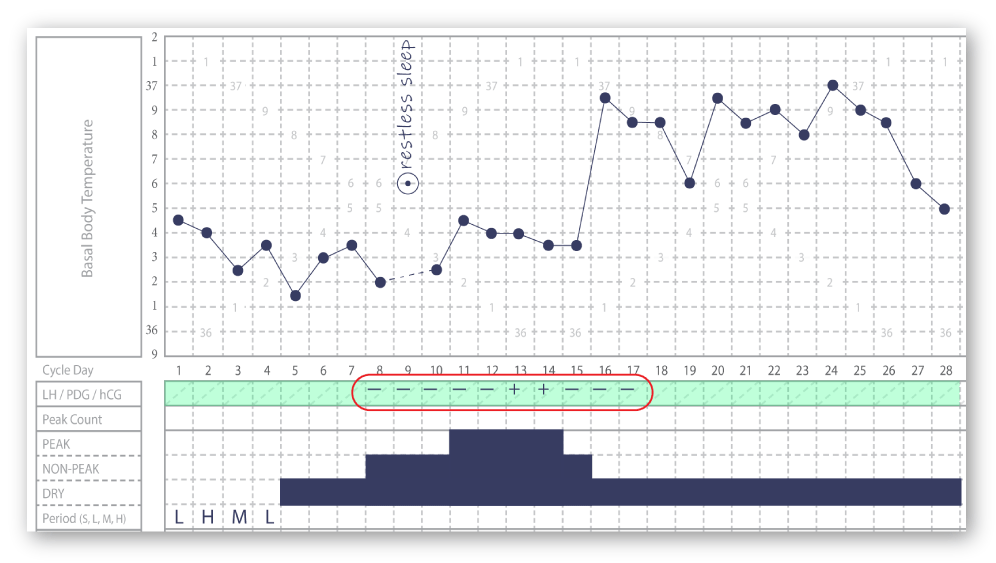Optional: LH Testing
Ovulation Predictor Kits (OPKs) (sometimes known as Luteinising Hormone (LH) test strips), are common tools used by couples who are trying to conceive. They are thin strips of paper that get dipped into a cup of urine. They measure the concentrations of LH in the urine. LH is a hormone that generally surges approximately 24-36 hours prior to ovulation – it is triggered after blood levels of oestrogen reach their peak (meaning that the dominant follicle has reached its peak size).
LH testing can provide useful additional info but is not a necessity. In fact, a positive LH test doesn’t guarantee that ovulation will occur, it just means that your body is going to attempt to ovulate. Some cycles will see multiple ovulation attempts before the body succeeds in ovulating.
There is wide variation between women as to how the LH surge coincides with ovulation. One study showed that for different women, ovulation either occurred at the onset of the LH surge, during the LH surge, or after the LH surge. For some women who ovulate at the onset of a LH surge, by the time they see a positive LH test it may be too late to have sex. This is because it takes time for the sperm to travel through the reproductive tract to the outer section of the fallopian tube before the egg dies.
For the above reasons, it’s best to rely primarily on cervical mucus observations when timing intercourse to conceive. LH charting can simply be a useful tool to provide additional information if you choose.

WHICH BRAND SHOULD I PURCHASE?
It’s recommended to use either Wondfo or ClinicalGuard brands (these are the brands used by established Symptohormonal Methods such as Marquette and FEMM).
WHEN SHOULD I START TESTING?
You should start testing when your fertile window opens (remember, the fertile window opens at the first sign of any cervical mucus/vaginal sensation unless a calculation rule opens it earlier).
If you would like to save money, you can try to wait until you see the first sign of peak-type cervical mucus.
WHEN SHOULD I STOP TESTING?
It’s recommended to stop testing when you get three negative days after a positive test.
HOW DO I USE THE LH TEST STRIPS?
It’s recommended to use late-morning to afternoon urine. Try to test between 10am – 8pm. It’s preferable to avoid first-morning urine as you’re less likely to see a positive test result. Try to test at approximately the same time each day.
- Urinate into a clean container
- Hold the test strip in a vertical position and ensure that the arrows are pointing downward
- Dip the strip approximately 1/4 inch into the urine and hold it there for at least 5 seconds (holding for longer will not give a false positive)
- Don’t dip the strip past the stop line
- Take out the strip and lay it down flat
- Read the results after 5 – 10 minutes
- If a control line is not visible, the test is invalid
- If the test line is as dark as or darker than the control line, then the test is a positive
- If the test line is lighter than the control line, then the test is a negative
Keep in mind that drinking excessive amounts of water may dilute the levels of LH in your urine; therefore, it’s a good idea to limit your water intake for 2 hours prior to testing. It’s also recommended to try to hold your urine for up to 4 hours prior to testing.

I’M STRUGGLING TO GET A POSITIVE
The duration of the LH surge is different for everyone. Some people will experience positive LH tests for a few days, while others might only have a small window of a few hours. If your LH surge is of a small duration, it means that you are less likely to catch it when testing. If you are consistently struggling to catch your LH surge, you can try testing twice per day (once in the morning, and once in the afternoon).
WHAT CAN I EXPECT TO SEE?
In a healthy cycle if you tested every single day, you would expect to see almost all negatives and then 1-3 positive tests right around/just before ovulation.

KEEP IN MIND
Those with PCOS may see extended days of positive LH tests during their cycle. LH Testing for those with PCOS can be problematic for this reason as you are more likely to receive a lot of positive tests (PCOS frequently causes elevated levels of LH). You may consider choosing not to use LH tests if you have PCOS.
LH tests are a good way to add an optional and reassuring layer of data to your chart – but they are not an official part of the Symptothermal Method. They are an optional extra.
LH tests can never confirm that ovulation has occurred. They can simply be a reassuring way to feel more confident about your cervical mucus and basal body temperature observations.
